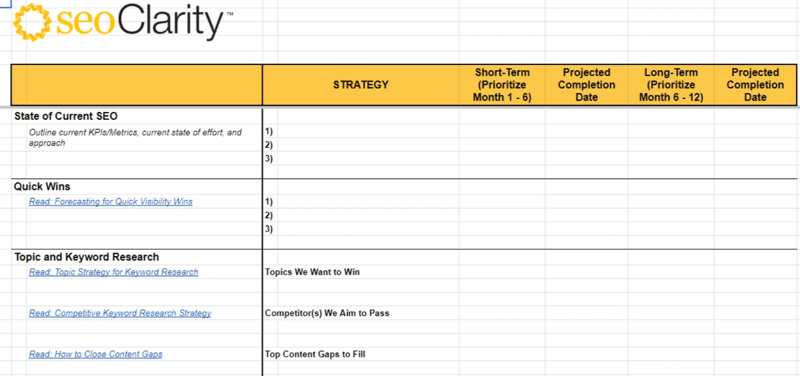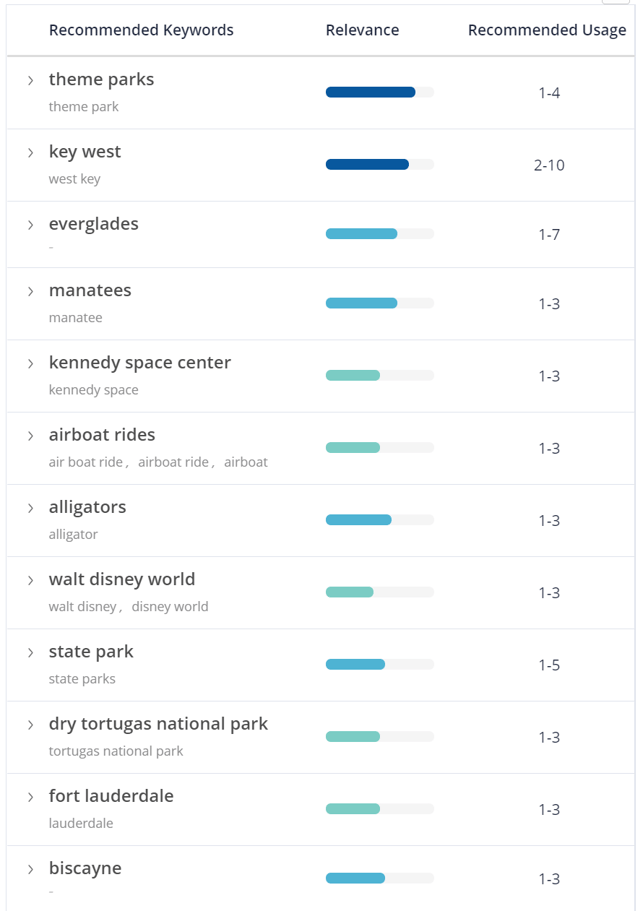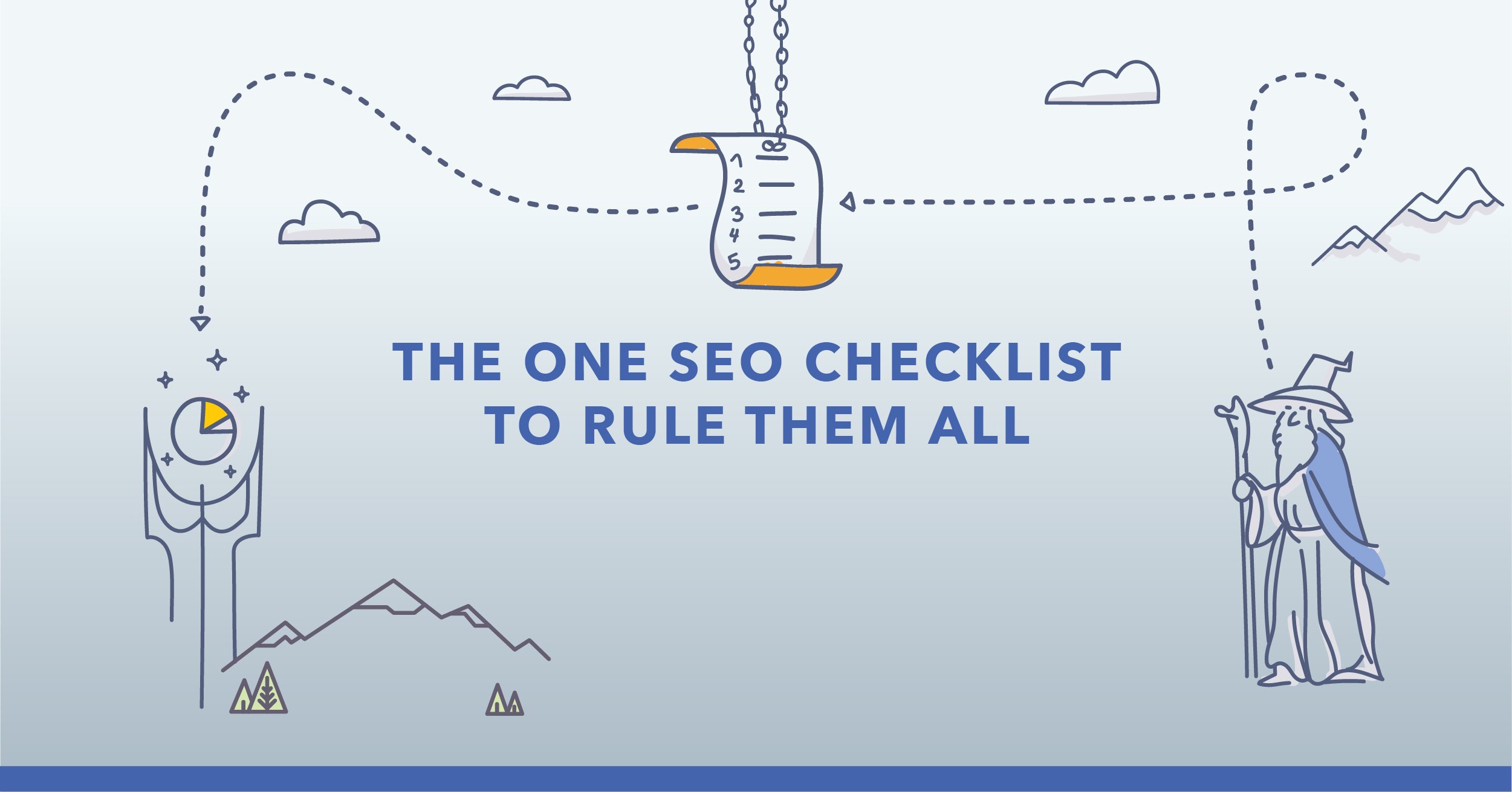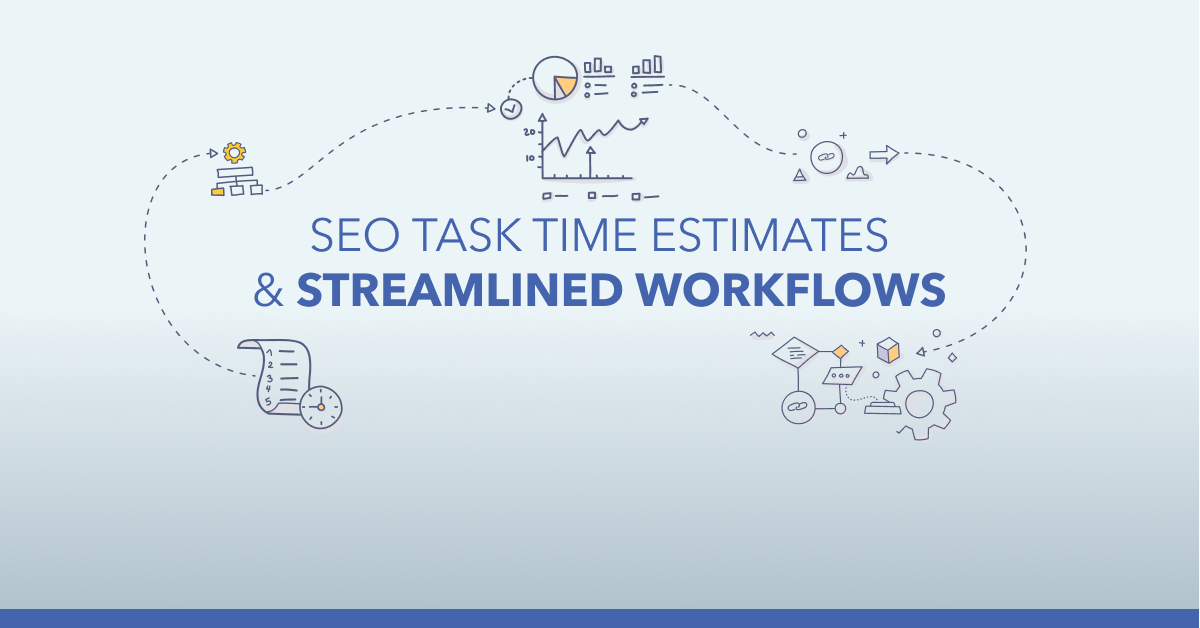Every winning SEO strategy needs a solid blueprint — an SEO roadmap — in order to scale.
You can develop this roadmap one of two ways:
- Assess your search visibility, audit the site and links, identify quick wins based on the data, and start implementing them one by one.
- Align your overall strategy with the company’s goals first. Then, create processes to maximize your time and effort in achieving those objectives.
Both approaches work, but only one of them allows you to consistently create the best search experience for users at scale. In this post, I’ll show you how to create and implement an SEO roadmap that aligns your SEO strategy with the goals of your company.
Plan and execute your winning SEO strategy with this free SEO roadmap template.
Table of Contents:
Watch a 5-minute summary of this article here!
What Is an SEO Roadmap?
An SEO roadmap is a strategic document an organization uses to keep all SEO-related activities on track, eliminate errors, and streamline decision-making. It outlines details about every tactic the company uses or intends to introduce to its SEO efforts.
An SEO roadmap also defines key responsibilities, various workflows, and standard operating procedures when performing each tactic.
Why You Need an SEO Roadmap For Your Strategy
You already know how to execute your SEO strategy—you understand the moving parts, the timelines, and the key objectives. So why invest time in creating an SEO roadmap?
Because without one, your strategy is vulnerable to misalignment, miscommunication, and disruptions.
Here’s why an SEO roadmap is essential:
✅ Ensures Clarity and Alignment Across Stakeholders
An SEO roadmap acts as a single source of truth, helping stakeholders understand the strategy, key initiatives, and expected outcomes. Whether it’s leadership, marketing teams, or developers, a well-defined roadmap ensures everyone is on the same page.
✅ Future-Proofs Your Strategy
SEO is a long game, and organizational shifts—such as team expansion, leadership changes, or budget adjustments—can impact execution. A roadmap provides continuity, ensuring your strategy remains clear and actionable, even when key players change.
In short, an SEO roadmap isn’t just a nice-to-have—it’s a critical tool for maintaining focus, avoiding errors, and keeping your SEO initiatives aligned with business goals. It keeps progress transparent, decisions accountable, and your strategy resilient in the face of change.
How to Create an SEO Roadmap in Three Steps
Creating a strategic and actionable SEO roadmap requires a structured approach.
Here’s how to do it:
- Define the Core Components of Your SEO Strategy
- Develop Standard Operating Procedures (SOPs) and Workflows
- Monitor, Measure, and Refine Your Processes
Let's dive into each step in the process.
Step 1: Define the Core Components of Your SEO Strategy
The first step in creating an SEO action plan is getting a clear understanding of the key components that drive your strategy. This means identifying the daily, weekly, and long-term tasks required to achieve your SEO goals.
Key Elements of An Effective SEO Strategy
A well-structured SEO roadmap will focus on the following aspects of your work:
- Current SEO Performance & Benchmarks: Assess your existing SEO efforts, including KPIs such as organic traffic, rankings, click-through rates (CTR), and conversions. Identify strengths, weaknesses, and areas for improvement.
- Quick wins for Immediate Impact: Pinpoint low-effort, high-impact opportunities—such as optimizing high-ranking pages for featured snippets, improving meta descriptions, or fixing broken links—that can drive immediate gains.
- Topic and keyword research: Define your content priorities based on search intent, keyword opportunities, and competitive analysis. This ensures your content strategy aligns with both user needs and business goals.
- Content Audits & Technical Site Audits: Regularly evaluate your site’s content for gaps, outdated information, and optimization opportunities. Simultaneously, conduct technical audits to address crawl errors, page speed issues, and indexability challenges.
- Planned SEO Initiatives: Map out upcoming projects, such as site migrations, content expansion, structured data implementation, or link-building campaigns. Establish timelines and key milestones to track progress.
Once you have defined the core components of your SEO strategy, you can then break them into standard operating procedures (SOPS) and workflows.
 (An image from our template that you can download below!)
(An image from our template that you can download below!)
Step 2: Develop Standard Operating Procedures (SOPs) and Workflows
Both SOPs and workflows are critical for an SEO roadmap since search visibility rarely depends on the work of a single department.
Link building involves outreach, creating quality content that is worthy of backlinks, and more. And many technical SEO issues can be fixed by the IT team only.
Good results only happen if all SEO stakeholders understand their roles and responsibilities, and always complete tasks to the same standard — which is exactly what SOPs and workflows help ensure.
Standard Operating Procedures for SEO
A standard operating procedure is a set of step-by-step instructions that define how to carry out a specific, often routine task. They typically involve tangible tasks and are almost never used to define the process of completing a specific objective.
It's also important to know that SOPs are set in stone; once an organization defines how employees should go about a specific task they should complete it the same way each time. Think of them like SEO checklists.
While many people don't like SOPs for this reason, their unchanging quality allows them to consistently improve SEO strategy. As our co-founder, Mitul, pointed out in an earlier post:
Replacing inconsistency with purposeful, measured and directed effort is CRITICAL to an enterprise's ability to be successful.
It’s only when all teams, often scattered across the globe, approach SEO tasks in the same way that an organization can achieve the scale needed to accomplish its SEO goals.
Examples of Common SEO Standard Operating Procedures
Common search engine optimization SOPs include:
- Optimizing new blog posts
- Adding a new page
- Removing old content
Example #1: Optimizing New Blog Posts
Many digital marketers never optimize their articles for SEO. And so, before any blog posts go live, another person, perhaps an SEO expert, should review the target keyword and identify semantic terms to enrich the copy further.
This ensures the content marketing strategy matches SEO best practices.
Solely relying on Google Search Console will only provide you with a list of keywords driving organic traffic — not strategic semantic terms. As an alternative, you can use Content Fusion, our AI-powered content writing tool, to uncover semantic insight automatically, based on a deep-learning algorithm.
Here's a look at the must-use topics for the keyword "things to do in Florida":
 (Terms to use in content with the keyword "things to do in Florida".)
(Terms to use in content with the keyword "things to do in Florida".)
The SEO should also identify potential interlinking opportunities. Again, you can do this manually or you can use a dedicated platform to reveal such insight.
Recommended Reading: Internal Links Workflow: How to Optimize and Gain More Site Authority
The last step for optimizing new blog posts is to ensure correct keyword placement in title tag, meta descriptions, and other on-page elements.
This process should be repeated for every piece of content.
Example #2: Adding a New Page
If your team is working to create new content they should follow this simple procedure:
- Identify and analyze the target keyword using relevant keyword and search volume research tools. This allows them to identify the target audience and discover any long-tail keywords.
- Optimize meta tags, ensuring correct optimization and length.
- Ensure correct canonical tags and schema are being used.
- Add a page to the sitemap.
Example #3. Removing Old Content
In an opposite situation, when taking down existing content, an SEO should always:
- Review target keywords for the content.
- Decide whether to redirect the URL to a similar page or point it to the 404 page.
- Remove the page from the sitemap.
- Remove any internal links pointing to the removed URL.
As you can see, none of these SOPs are long or complex. However, they guarantee that regardless of who works on a specific task, they always complete all relevant actions.
SEO Workflows
A workflow defines all stakeholders in the project, their responsibilities, and timelines for completion. In short, it gives structure to a combination of SOPs and helps achieve a specific objective.
Recommended Reading: How to Create SEO Workflows for Consistent, Scalable Results
Examples of Common SEO Workflows
Example #1. Analyzing SEO Performance
Data analysis is key to any marketing strategy. When assessing a site's analytics and performance, an SEO team should:
- Extract traffic by various criteria (i.e. most popular page or source). This could be done by a junior team member.
- Similarly, they could access and download data on metrics such as clicks and impressions from Google Search Console or their enterprise SEO solution of choice.
- They could use a rank-tracking tool to analyze current search positions in search engine result pages (SERPs) by various criteria.
- All this data could go to an SEO analyst next, who would analyze and compare the performance with the competition.
- Finally, an SEO strategist would use their insight to identify the next actions to take.
Example #2. Fixing Crawlability Issues
This workflow would begin with an SEO analyst evaluating crawling and indexation errors.
From there, the next step is making a list of top priorities. Start by defining an end goal for your organization. What do you hope to accomplish when addressing these errors?
Consider the most important pages to address if you're concerned about conversions.
Then, determine which issues will require the least effort and have the biggest value for your SEO. Those tasks should be top priority for your IT team, so they can attack and eliminate the technical issues on your site and enhance the overall user experience.
Example #3. Updating the Content
This workflow could involve several individuals within your organization – an SEO analyst, an SEO manager, a content writer, and an editor.
This example features the following:
- SEO Analyst – identifies underperforming content and content gaps; makes recommendations for improvements that will positively impact performance metrics.
- SEO Manager – evaluates on-page optimization, approves the process, and implements the content changes on the live site.
- Content Writer – utilizes various tools, identifies specific ways to improve the content, and writes new copy.
- Editor – evaluates the new copy.
Once approved, the SEO manager will verify if the requirements have been fulfilled with this workflow and push the content to go live.
For each of the above workflows, it's important to define your timeline before getting started. So, in the case of that last example, the workflow could look like this:
|
Task |
Responsibility |
Timeline |
|
Identify underperforming content to improve, and create a project report. |
SEO Analyst |
1 day |
|
Approve the project. |
SEO Manager |
2 days |
|
Identify ways to optimize the content, and write new copy. |
Content Writer |
3 days |
|
Evaluate new copy. |
Editor |
1 day |
|
Update the content on a page. |
SEO Manager |
1 day |
|
Evaluate on-page optimization and publish on live site. |
SEO Manager |
1 day |
Step 3: Monitor, Measure, and Refine Processes
Identifying and implementing SOPs and workflows is just the beginning. Once they are complete, they have to be constantly monitored to assess the quality of outputs.
After all, any process that doesn’t boost organic traffic and deliver desired results is ultimately nothing more than a distraction.
So, continuously review and improve your SOPs and workflows, paying particular attention to:
- The impact they have on your work. Identify and correct processes that slow down or even hinder your strategies.
- The timing of delivery, particularly for workflows. Some steps might need more time than you’ve allocated to them in the workflow. Measure and adjust them to find the most optimum solution.
- Role relevancy. Sometimes a division of responsibilities in a workflow might look great in theory but work poorly in practice. Monitor and interview everyone involved to see if there’s a role mismatch, or if their tasks come in the wrong order.
How to Use an SEO Roadmap in an Enterprise Organization
A well-defined SEO roadmap is only valuable if it’s effectively used across your organization. To maximize its impact, it must be accessible, easy to understand, and actionable for all stakeholders—not just SEOs.
Make the Roadmap Clear and Accessible
One of the biggest challenges in enterprise SEO is getting buy-in from non-SEO teams, such as leadership, marketing, IT, and product teams. A roadmap that simplifies complex SEO initiatives reduces friction and ensures alignment across departments.
Use a Simple, Actionable Format
A straightforward spreadsheet is often the most practical format for an SEO roadmap. It should outline:
- Key SEO initiatives (technical fixes, content creation, link building, etc.)
- Planned activities by month or quarter
- Responsibilities and ownership
- Milestones and deadlines
This format ensures that stakeholders can easily track progress, understand their roles, and provide updates when necessary. It also simplifies reporting, making it easier to showcase SEO’s impact on business goals.
By making your SEO roadmap accessible and easy to follow, you turn it into a strategic tool that drives alignment, accountability, and long-term success across the organization.
Conclusion
Building a strong SEO roadmap requires identifying and consistent application of standard operating procedures and workflows. We want to make it easier for you with our free template:
Remember: an organization can only achieve the highest search visibility at scale when all teams involved in delivering specific SEO projects know what to do, when to do it, and how to be successful.
What’s left for you to do is to start defining and implementing SOPs and workflows in your organization — digital marketing efforts are related to all teams!
<<Editor's note: this blog was originally published in 2020 and has been updated.>>









1 Comment
Click here to read/write comments